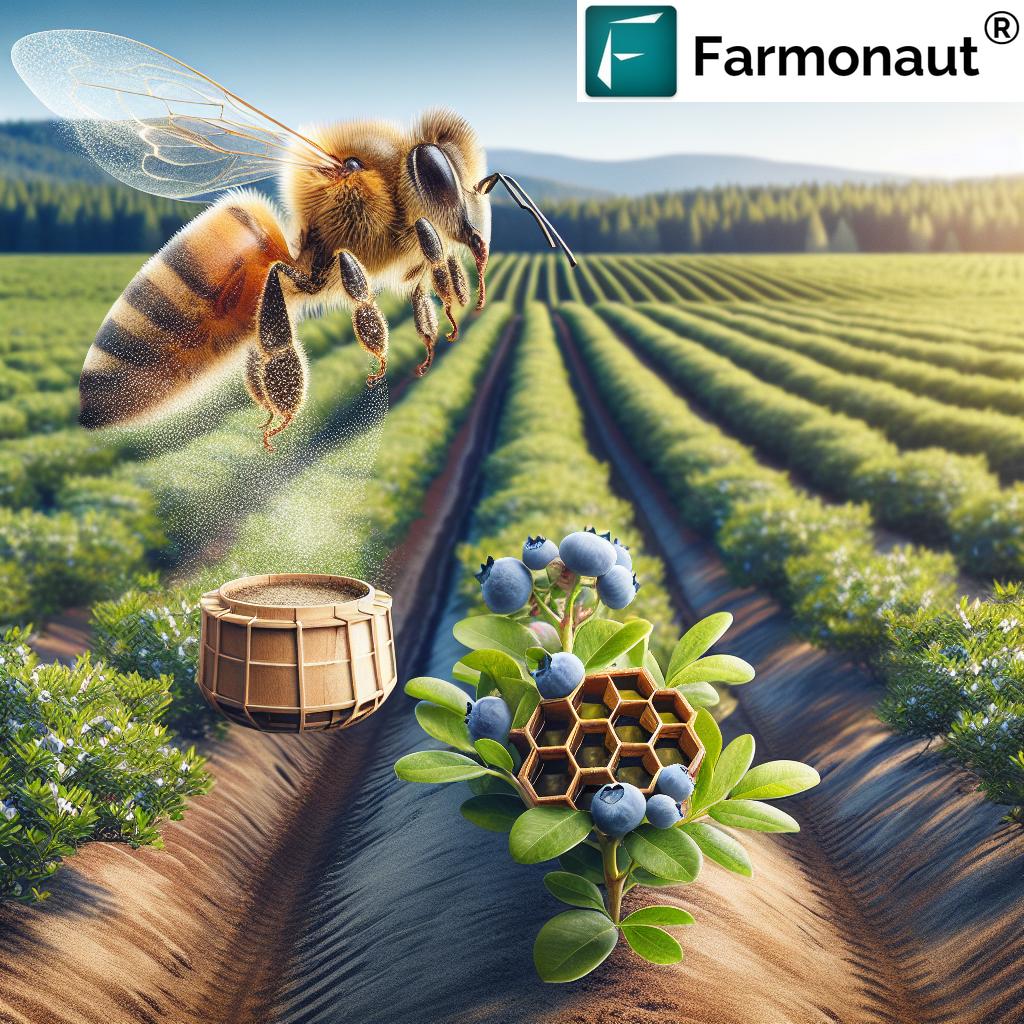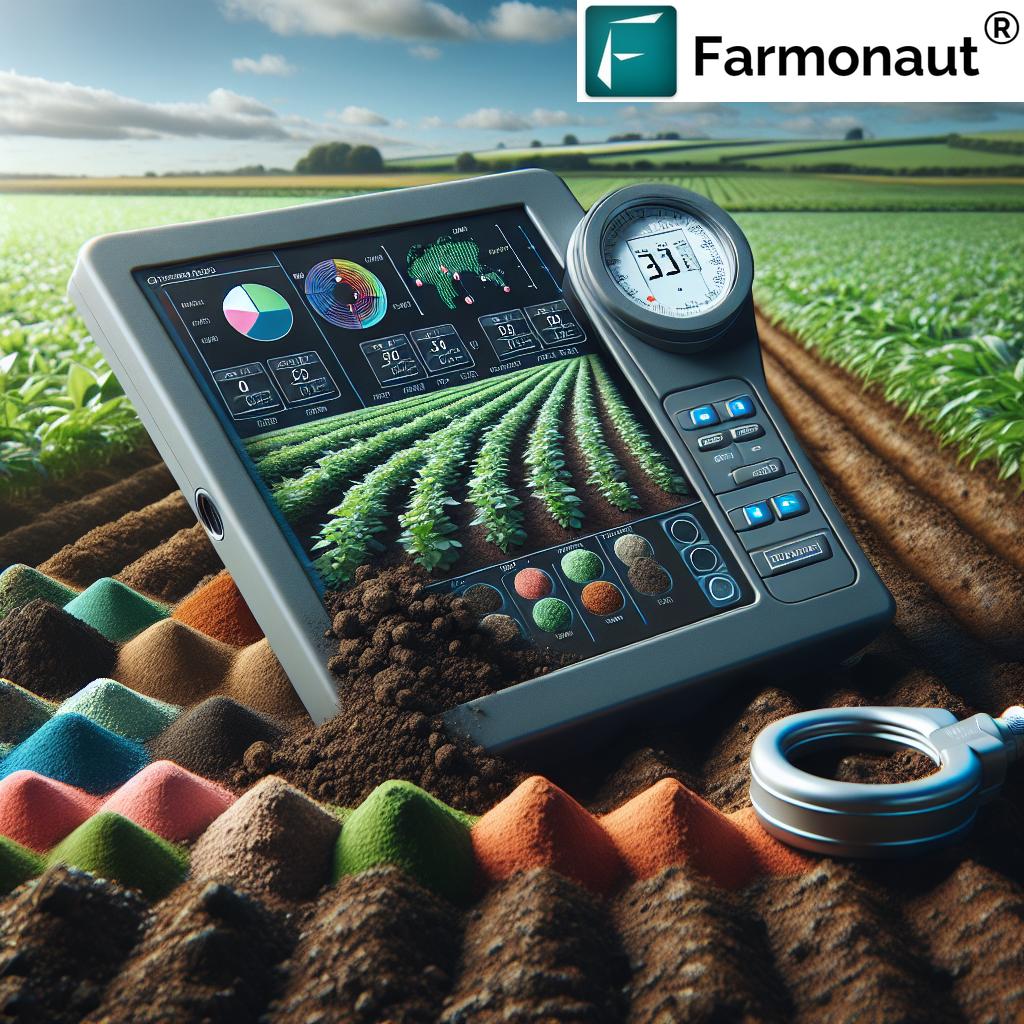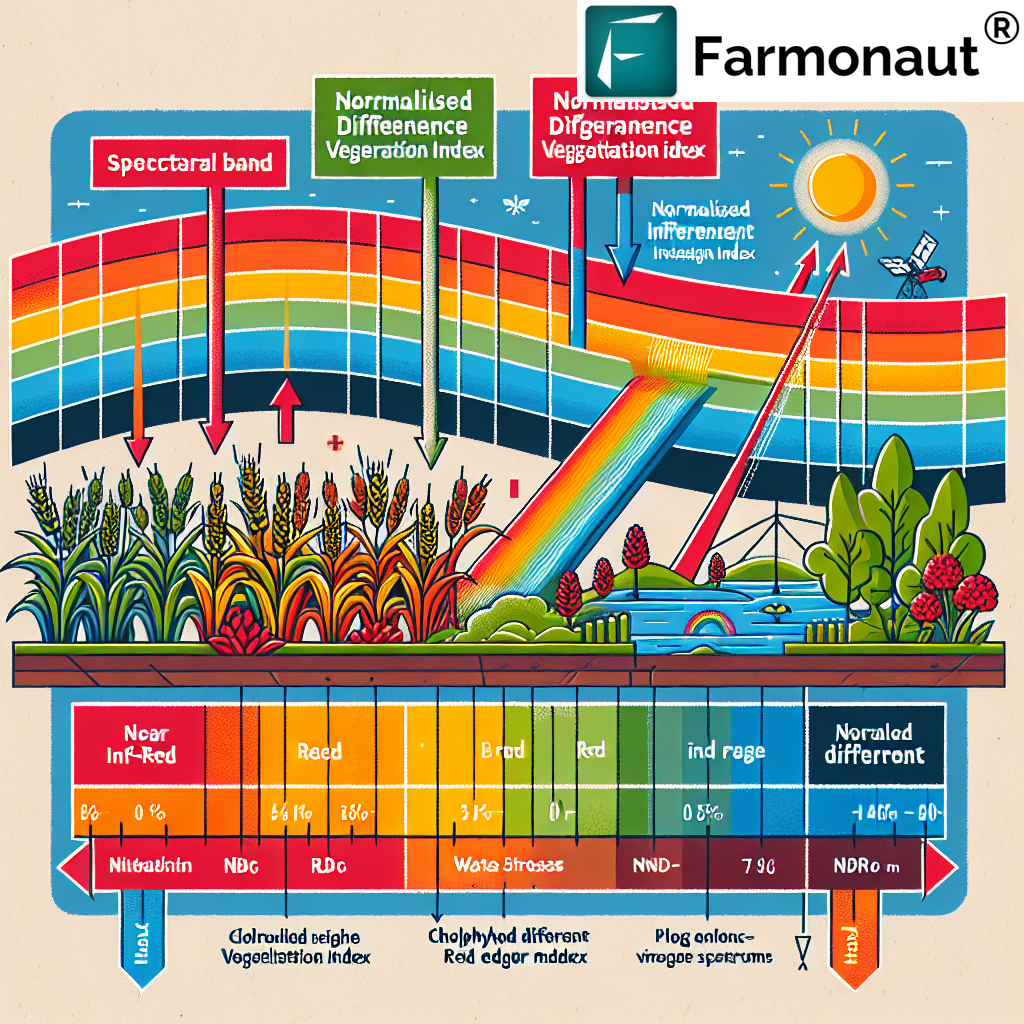Livestock Chicken Farming 2026: Smart Innovations & Growth
“Chicken farming tech investments are projected to grow by 22% by 2026, transforming small-scale operations worldwide.”
Introduction: The Future of Livestock Chicken Farming (2026)
Livestock chicken farming remains a vital component of the global agriculture industry as we step into 2026. With the planet’s populations on the rise and an intensifying demand for affordable, high-quality protein, chicken and poultry operations are at the frontline, evolving to combine the best of traditional practices with cutting-edge technological innovations. This article explores the current landscape, future trends, smart solutions, growth opportunities, and mounting challenges within livestock chicken farming worldwide.
We will dive deep into topics such as:
- The relevance and future of live chicken farms and small livestock operations
- The crucial role of livestock loans and digital finance in modern agriculture
- How sustainable practices are reshaping poultry operations
- The application of next-gen management systems, AI, and data analytics for health monitoring and yield optimization
- Empowering rural farmers as a backbone for food security and local economies
Whether you’re a commercial producer, a smallholder, an agri-entrepreneur, or a technology partner, this guide will help you understand the growth drivers of livestock chicken farming in 2026 and beyond.
Livestock Chicken Farming: A Pillar of Food Security
Livestock chicken and live chicken farms have always served as a pillar of food security across continents. Being an essential source of animal protein, chicken is affordable, has rapid growth cycles, and exhibits tremendous adaptability to diverse farming conditions. By 2026, the poultry sector is not only maintaining these advantages but multiplying them with technology-driven practices—ensuring steady supply chains and affordable nutrition to a global customer base.
Key Roles of Chicken Farming within Global Food Supply Chains
- Affordability: Chicken protein remains the most accessible among animal proteins (meat yield per input cost is the highest among traditional livestock).
- Efficiency: Short production cycles & high feed conversion rates mean livestock chicken farming delivers more on less land, supporting high-density population centers.
- Adaptability: Chicken breeds today are suited for intensive farms as well as small, rural systems.
- Resilience: Enhanced genetic breeds and biosecurity measures introduced in recent years increase resistance against common diseases and reduce losses from outbreaks.
These pillars form the very architecture of modern livestock agriculture and set the stage for further growth, innovation, and sustainability within the poultry sector.
How Technology Reframes Food Security
Farms across the globe are increasingly mechanized—from automated feeders to sensors that optimize environmental conditions within broiler and layer houses.
- Data-rich IoT sensors & satellite imagery can monitor feed and water supply, adjust ventilation systems, and predict disease outbreaks for immediate course corrections.
- Machine learning analytics tools are now employed to improve biosecurity, automate waste disposal, and enhance productivity by fine-tuning the entire production cycle.
Such technological improvements not only lead to higher meat yield and egg production but also reduce environmental footprints.
Genetic Breeds & Disease Resistance—A Technological Leap
Improved genetic breeds are at the heart of modern chicken farming.
- 2026 sees the proliferation of optimized breeds—locally adapted chickens that are both disease-resistant and capable of thriving in diverse conditions.
- Advanced breeding programs, often aided by AI-based analytics, work hand-in-hand with farmers to minimize health risks and maximize production rates.
This shift toward biosecurity and disease control is crucial in an era where productivity and animal welfare must be in balance.
Smart Technologies Shaping Chicken Farming in 2025–26
Smart farming technologies are revolutionizing chicken farming. Leveraging sensors, AI, digital platforms, and real-time data analysis, both large-scale and small livestock operations can now operate with unprecedented efficiency, transparency, and sustainability.
Top Innovations Powering Livestock Agriculture
- IoT Sensors & Automation – Smart sheds for monitoring temperature, humidity, CO2, ammonia, and movement, optimizing chicken health and welfare.
- Automated Feeders & Watering Systems – Precision feeding and automated supply mean efficient resource usage, cost savings, and higher yields.
- AI-Driven Health Monitoring – Targeted disease prevention, customized vaccination schedules, and rapid response to anomalies.
-
Satellite-Based Monitoring & Blockchain Traceability – As offered by Farmonaut, satellite insights for growth monitoring, and blockchain for fraud-proof supply chain transparency.
Explore Farmonaut’s Traceability Product to ensure transparent and secure poultry supply chains, fostering trust and food safety from the farm to the consumer. - Sustainable Waste Management – Manure-to-energy conversion, water recycling plants, and eco-friendly waste disposal methods.
By integrating these technologies, chicken farms are poised to meet rising demand efficiently while also addressing the critical issues of food safety, traceability, and sustainability.
Blockchain, AI, and Connectivity—An Interconnected Livestock Sector
Modern livestock agriculture brings together blockchain traceability, real-time fleet management, and AI-driven advisory such as the Jeevn AI Advisory System. This interconnectedness ensures:
- Data-driven decision-making for both large-scale and small livestock operations.
- Provenance assurance for livestock chicken for sale—beneficial for premium and international markets where traceability is essential.
-
Minimized risks of disease outbreaks and fraudulent claims through instant, satellite-verified reporting.
To benefit from robust satellite monitoring and secure resource allocation, consider Farmonaut’s Fleet Management Product for efficient transportation, herd management, and logistics planning.
Small Livestock Chicken Farming & Rural Empowerment
Small livestock operations are often the unsung heroes of food security in rural communities. In 2026, small livestock chicken farms play a significant role in empowering households, fostering livelihoods, and fueling the local economy.
- Ownership: Most small farms are family-run, relying on simpler and locally sourced infrastructure.
- Accessibility: With limited capital, rural farmers make use of available resources for livestock chicken rearing, driving a decentralized yet robust supply chain.
- Community Supply Chains: Live chicken farm outputs are directed towards local or regional markets, ensuring fresher and less-transported products, reducing emissions and spoilage.
- Skills Development: Training initiatives, often supported by government bodies and NGOs, are targeting small livestock holders for skills in management, disease control, and sustainable practices.
On the flip side, livestock loans and accessible finance are acting as a bridge, enabling smallholders to invest in better breeds, feed systems, and healthcare.
“Over 60% of livestock chicken farms will adopt smart monitoring systems by 2025 for enhanced efficiency and sustainability.”
Direct-to-Consumer Models and Local Impact
Small farms selling livestock chicken for sale through live markets build mutual trust and ensure nutritional security within their communities:
- Supports local economies and strengthens rural employment.
- Reduces food miles and overall environmental impact on the supply chain.
-
Encourages the adoption of sustainable practices via training and peer learning.
For insights into how your operations can become more sustainable, visit Farmonaut’s Carbon Footprinting Service—track your environmental impact and access actionable guidance to reduce emissions in chicken farming.
Livestock Loans: Fueling Growth, Innovation, and Security
Access to finance through livestock loans is pivotal for both small and medium-sized enterprises in chicken farming. In 2026, financial services play a crucial role in:
- Funding the adoption of improved breeds, mechanization, and technological upgrades.
- Supporting better infrastructure such as poultry sheds, water systems, and waste management plants.
- Ensuring continued investment into biosecurity measures, healthcare, and sustainable feed production systems.
-
Backing women and young farmers who are increasingly becoming influential players in the sector.
Explore Farmonaut’s Crop Loan & Insurance Solutions to accelerate your access to reliable satellite-verified lending and risk reduction!
Digital finance platforms and mobile banking—along with satellite-based verification—are making livestock loans more accessible and reducing default risks due to enhanced data-driven loan assessment.
Flexible Livestock Loan Products in 2026
- Loan repayment schedules now align with production cycles—easing financial stress on farmers.
- Collateral-free microloans are designed for marginalized groups and new agri-entrepreneurs.
- Risk assessments are made rapid and accurate through AI and satellite data analytics, minimizing bad debts.
- Loan-linked advisory services ensure funds translate into measurable gains in yield, health, and sustainability.
Livestock loans are the catalysts that transform routine poultry rearing into growth-driven, sustainable enterprises.
Sustainability and Environmental Management in Poultry
The environmental impact of livestock chicken farming is becoming a focal point in 2026, with both large and small farms addressing issues of:
- Manure management and emissions: Developing circular systems for waste utilization, such as converting manure into energy or organic fertilizer.
- Water conservation: Installation of closed-loop water systems, optimized irrigation, and rainwater harvesting to reduce pressure on local resources.
- Greenhouse gas emissions reduction: Incorporating renewable energy, efficient ventilation, and low-emission feed practices contributing to climate-resilient operations.
- Antibiotic-free & organic feeds: Growing market preference and regulatory push for natural alternatives, improving both animal health and public safety.
Sustainability Certification Made Simple
New digital certification and monitoring technologies enable farms to measure sustainability metrics—boosting their brand value and market competitiveness.
Comparison Table: Key Smart Technologies in Chicken Farming (2025 vs. 2026, With Estimated Impacts)
| Technology Name | Description | 2025 Adoption Rate (Est. %) | 2026 Adoption Rate (Est. %) | Main Benefits | Estimated ROI for Farmers |
|---|---|---|---|---|---|
| IoT Sensors | Environmental and health monitoring (temp, CO2, humidity) | 40% | 62% | Early disease detection, reduced losses, improved welfare | 15–25% improvement in profit via loss reduction |
| Automated Feeders | Robotic systems delivering optimal feed quantities on schedule | 28% | 49% | Consistent growth, cost savings on feed, better yield | 10–20% yield increase |
| AI-Driven Health Monitoring | Analytics for health, predicting disease outbreaks | 16% | 36% | Minimized outbreaks, optimized vaccination, reduced mortality | Upto 33% lower health-related losses |
| Sustainable Waste Management | Circular use, energy from manure, water reuse | 22% | 35% | Lower emissions, new revenue streams, eco-friendly | 5–10% extra income via waste product sales |
| Satellite Monitoring & Blockchain Traceability | Field & health monitoring with verifiable supply chains | 18% | 32% | Enhanced transparency, fraud reduction, access to premium markets | 20–30% higher pricing for traceable products |
Key Challenges and Solutions in the Chicken Farming Sector
Even as livestock chicken farming continues its upward trajectory in 2026, it faces persistent and emerging challenges that demand both strategic vision and practical innovations:
-
Disease Outbreaks: Avian influenza and other viral and bacterial diseases threaten operations.
Best Solution: Widespread adoption of IoT-based surveillance and AI-driven health analytics. -
Environmental Pressures: Waste disposal, water usage, and greenhouse emissions pose ecological risks.
Best Solution: Investment in sustainable waste management systems and renewable energy sources. -
Landing Livestock Loans: Credit risk and documentation hurdles for smallholders.
Best Solution: Satellite-verified, digital lending platforms that speed up access and minimize fraud.
Developers and financial service providers can tap into Farmonaut’s Satellite API and access our API Developer Docs to enhance risk assessment and delivery of credit services. -
Consumer Demand for Traceability: Buyers now expect proof of welfare and sustainability.
Best Solution: Blockchain-backed traceability and digital certification for premium market access. - Labour Shortages & Skills Gaps: Automation, training, and digital upskilling are essential as poultry operations modernize.
The road ahead for chicken farms is one of persistent improvement—where technology adoption meets core rural values and resilience.
The Farmonaut Advantage in Livestock Chicken Agriculture
At Farmonaut, we enable the global chicken farming industry with affordable, scalable, and AI-powered satellite technology. This empowers both smallholders and large commercial producers with tools to transform real-time data into better management decisions and measurable productivity gains:
- Satellite Crop & Livestock Monitoring: Multispectral satellite imagery provides powerful insights into flock health, environmental conditions, water management, and even infrastructure risk.
- Jeevn AI Advisory System: Our AI-driven solution offers weather forecasts, precise operational insights, and real-time alerts for disease management—increasing both profitability and resilience.
- Blockchain Traceability: We help establish trust and transparency in food supply chains, from feed origins to live chicken farm outputs and finished products.
- Fleet & Resource Management: Efficient movement of animals, feed, and products is critical; our platform offers seamless tracking for enhanced logistics.
- Environmental Impact & Carbon Tracking: We make it simple for farms to assess—and reduce—their carbon footprints, qualifying for sustainability certifications and premium markets.
Our subscription packages are accessible via web and mobile apps to suit every scale of farming.
Discover more about Farmonaut’s Large Scale Farm Management Solution, enabling seamless administration, multi-farm insights, and modern reporting.
Trends, Opportunities, and the Road Ahead for Chicken Farms
2026 and Beyond: Industry Trends Driving Livestock Chicken Farming
- Data-Driven Farms: Adoption of digital platforms and AI tools for continuous farm monitoring will become the baseline for both efficiency and compliance.
- Renewable & Circular Systems: Energy-positive chicken farms—using biogas, solar, and upcycled waste—will see exponential growth.
- Diverse & Localized Breeds: Focus on breeds resilient to regional diseases and climate volatility, ensuring adaptability to local conditions and markets.
- Women & Youth Empowerment: Targeted financial products, digital training, and mobile-first solutions will attract new talent into the small livestock farming sector.
- Direct-to-Consumer & E-Commerce: Livestock chicken for sale is increasingly found on digital platforms, connecting rural producers to urban and international buyers directly.
Key Opportunities in Livestock Agriculture
- Premium Markets: Farms meeting traceability and sustainability standards will command higher prices.
- Integrated Agri-Food Systems: Combining poultry with fisheries, crops, and biogas plants for full-cycle, zero-waste agriculture.
- Digital Advisory Services: Access to real-time, satellite-powered advisory will increase resilience in the face of climate and market uncertainties.
FAQ: Livestock Chicken Farming 2026 & Smart Innovations
What are the top technologies impacting chicken farming in 2026?
Technologies like IoT sensors, AI-based health analytics, blockchain traceability, and sustainable waste management solutions are revolutionizing both large and small livestock chicken operations. Satellite-based monitoring, as offered by Farmonaut, is especially valuable for real-time field and flock assessment.
How do livestock loans help small farmers in chicken farming?
Livestock loans provide essential capital for investing in improved breeds, technological systems, feed infrastructure, and health management. In 2026, digital finance and satellite-based verification have made loan products more flexible, accessible, and fair.
Why is sustainability becoming central to live chicken farms?
Rising awareness about environmental impact and regulatory pressure are pushing the industry towards closed-loop waste management, emission control, water conservation, and organic feed adoption, making sustainability a competitive necessity.
Can small livestock farmers access technology affordably?
Yes. With entry-level digital solutions, mobile apps, and cloud-based satellite services—farmers of all scales can deploy smart tools for monitoring, advisory, logistics, and traceability, often with low to moderate investment.
How do platforms like Farmonaut support the livestock chicken sector?
We offer satellite-based monitoring, AI advisory, blockchain-based traceability, and resource management tools that make modern farm management accessible, affordable, and scalable. Our solutions are designed to empower farmers, businesses, and governments in achieving heightened productivity and sustainability.
What steps can a farmer take today to future-proof their chicken farming operations?
Invest in biosecure infrastructure, explore digital advisory tools, apply for livestock loans to upgrade health and feed systems, and connect with traceability-enabled supply chains. Continuous skills development and data-driven decision-making are crucial for long-term viability.
Conclusion: Balancing Growth, Innovation & Sustainability
Livestock chicken farming in 2026 occupies a crossroads between tradition and innovation, where technology, finance, and sustainable practices meet to answer the world’s protein needs efficiently and responsibly. From live chicken farms to digitalized small livestock operations, the sector is rich with opportunity—from empowering rural households to launching premium, traceable products for urban and export markets.
- Growth within the industry is underwritten by smart investments in technology and sustainability, supported by more accessible livestock loans and flexible financial solutions.
- Challenges such as disease threats, emissions, and consumer transparency are being tackled innovatively with digital and biosecure solutions.
The road ahead for livestock chicken farming is promising and transformative—anchored in food security and global nutritional health.
For businesses, farmers, developers, and policymakers, now is the time to:
- Leverage smart technologies to optimize productivity and sustainability,
- Access digital finance and satellite-powered solutions for operational security,
- Make informed, data-driven decisions for the future of livestock agriculture,
- Promote training, inclusivity, and traceability for a robust supply chain.
Explore Farmonaut’s platform, subscribe to affordable digital tools, and position your enterprise at the forefront of the chicken farming revolution.














